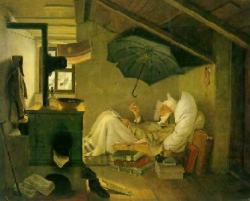
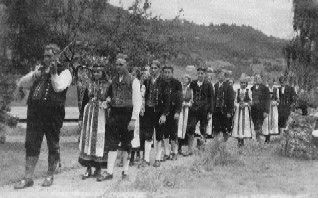
en.wikipedia.org/wiki/Hardanger_fiddle
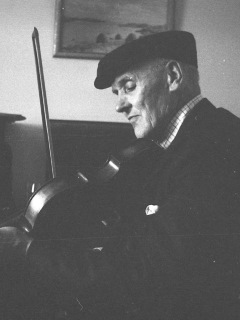 In March 2020, TG4 und BBC Gaeilge broadcast Deaglán Ó Mocháin's
music documentary An Fhidil Bheo: ceol an Northern Fiddler
(The Lively Bow: the Music of The Northern Fiddler), loosely based on the book The Northern Fiddler: Music and Musicians of Donegal and Tyrone.
Published by Allen Feldman and Éamonn O'Doherty in 1979, it had been a compilation of music, photos, illustrations and interviews,
featuring a selection of traditional Irish fiddle players such as the legendary John Doherty, Con Cassidy, and Francie and Mickey Byrne.
Forty years after its publication, its legacy emerges through performances and discussion from a range of artists from across the
Irish Republic and Northern Ireland: Mairéad Ní Mhaonaigh (Gweedore), Paddy Glackin (Dublin),
Dónal McCague (Monaghan), Conor Caldwell (Belfast),
Maurice Bradley (South Derry), Ellie Nic Fhionnlaigh (Glencolmcille), Maggie Maguire (Fermanagh), Laura
Kerr (Armagh), Dermy Diamond (Belfast), Sinéad McKenna (Tyrone), Roisín McGrory (Inishowen), Dermot McLaughlin (Derry).
In March 2020, TG4 und BBC Gaeilge broadcast Deaglán Ó Mocháin's
music documentary An Fhidil Bheo: ceol an Northern Fiddler
(The Lively Bow: the Music of The Northern Fiddler), loosely based on the book The Northern Fiddler: Music and Musicians of Donegal and Tyrone.
Published by Allen Feldman and Éamonn O'Doherty in 1979, it had been a compilation of music, photos, illustrations and interviews,
featuring a selection of traditional Irish fiddle players such as the legendary John Doherty, Con Cassidy, and Francie and Mickey Byrne.
Forty years after its publication, its legacy emerges through performances and discussion from a range of artists from across the
Irish Republic and Northern Ireland: Mairéad Ní Mhaonaigh (Gweedore), Paddy Glackin (Dublin),
Dónal McCague (Monaghan), Conor Caldwell (Belfast),
Maurice Bradley (South Derry), Ellie Nic Fhionnlaigh (Glencolmcille), Maggie Maguire (Fermanagh), Laura
Kerr (Armagh), Dermy Diamond (Belfast), Sinéad McKenna (Tyrone), Roisín McGrory (Inishowen), Dermot McLaughlin (Derry).
![]() Allen Feldman and Éamonn O'Doherty, The Northern Fiddler: Music and Musicians of Donegal and Tyrone. Blackstaff Press, 1979
Allen Feldman and Éamonn O'Doherty, The Northern Fiddler: Music and Musicians of Donegal and Tyrone. Blackstaff Press, 1979
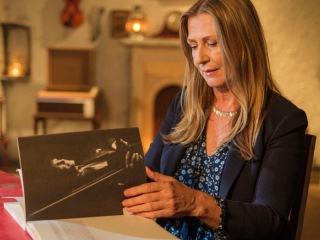
![]() Mairéad Ní Mhaonaigh @ FROG
Mairéad Ní Mhaonaigh @ FROG
www.mairead.ie
The Hardingfele (Hardanger fiddle), used mainly in the southwestern part of Norway, is a kind of violin (flatfele), with thin sympathetic strings resonating under the influence of the playing strings. Probably everyone knows the instrument that originated in the Hardanger fjord and its sound from the Fargo movie, the main soundtrack theme is a take on a traditional Norwegian song.
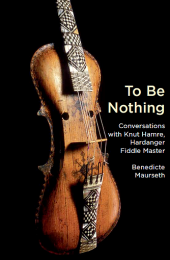
Once this slåttemusikk (i.e. fiddle music) used to be the day-to-day music of Norway's villages and farmsteads. However, in the mid 20th century traditional music was threatened by Anglo-American culture, and only a few young people kept up the tradition. One of them, maybe even the most prominent today, is Knut Hamre from Granvin village.
Knut Hamre (born in 1952) played the Hardanger fiddle and its associated music since childhood. In 1974, he won the national kappleik (folk music competition), the youngest ever winner, to the surprise and chagrin of a lot of people.
His became a familiar face. Even more so, when in the mid 1980s he got the job as Hardanger fiddler teacher at the area's music school, giving up bricklaying and chimney sweeping. For many years, Knut spent the whole week travelling from parish to parish. He taught more than 60 students every school term, being a patient and empathic tutor.
Among his students had been Annlaug Børsheim who had, still has, a successful career on the crossroads of folk and pop music. Turid Spildo recorded several CDs, both solo, with Knut and the folk ensemble Dvergmål. In 1998, American jazz guitarist Steve Tibbetts and his longtime percussion partner Marc Anderson paid Knut and Turid a visit which resulted in the the album "Å," praised by Billboard magazine, by the way, but shunned in Norway because of its unorthodox and Bohemian character.
Knut remembers:
He even went further:
Steve Tibbetts observed about the man:
Knut's student Benedicte Maurseth (born in 1983) picked up the Hardanger fiddle at the age seven. In 2007, she became Young Folk Musician of the Year. The year before, she and Knut had recorded some 17th/18th century Hardanger fiddles, the oldest instruments preserved. It was up to Benedicte to introduce this legacy through extensive touring to a worldwide audience. (Here in Germany she played the prestigious Rudolstadt Festival in 2010.)
To Be Nothing is not a book about the life and accomplishments of Knut Hamre. It is not even a book about Knut's music, though you learn a lot about his curriculum vitae. Benedicte enters into a dialogue with Knut (which sometimes becomes a monologue); they swap their ideas about any aspect of life, and particularly master-student-relationships and the healing qualities of performing and listening to music.
This is in accordance with Knut being more than a mere performer and tutor, but something like a Norwegian musical equivalent to a Buddhistic Zen master. I wasn't surprised to learn that Knut counts poet Olav Håkonson Hauge (1908-1994) among his mentors.
Knut is not only taking inspiration from poetry, e.g. Japanese haiku poems, but visual arts and philosophy as well. He regards himself as a nothing,
We might have heard these view before. Thus, Benedicte's collection not only serves in introducing the whole world of the Hardanger fiddle to the curious public beyond the Skagerrak, but can be generalized to many other traditions and musical genres. This is much more than one usually can ask from a 200 pages paperback... :-)
The current turmoil aside, 2020 kicked off well for blues/soul singer Janiva Magness. Once again, she has been nominated as Best Contemporary Female Blues Artist for the Blues Music Awards, in the blues world being the Grammy Awards and Oscars rolled into one. (To date she received 28 nominations and 7 wins.) Looking back at Janiva's life, probably nobody would have foreseen this.
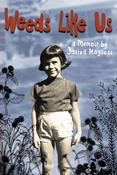
Weeds Like Us (named after the song released on her 2010 album "The Devil Is An Angel Too") is a heart-rendering and thought-provoking autobiography who follows her through hell from childhood through adolescence into adulthood - parental suicide, foster care, psychiatric hospitalization, alcohol, drugs and suicide attempts of her own: writing down these bones has been a difficult process for me – difficult, but a compelling and healing one, too. I am compelled by the idea that in some way, my telling of these experiences might help someone else survive their own struggles with their lives and histories.
Janiva fought the Magness Curse (a family history where the default position is despair, depression and addiction, with suicide as the ultimate end) and found her salvation in The Blues: There is no doubt in my mind I would have been cold in the ground a long time ago were it not for my love affair with the genre. Whatever the misery, playing and singing always took me to another place. That’s the whole purpose of the blues in the first place. Sing about the pain. The joy. The rage. Connect with other people through the universal experience of music, and look what happens: You feel better. Funny how that works. It’s some of the best medicine there is.
After all, the music set her on a road to success. End of story so far, Janiva bumped into Taj Mahal at the Blues Awards: He stopped me in my tracks to say congratulations. “Do you realize what you have done?” he asked with intensity. “That was an incredible performance! They love you! They all love you, the young ones, the older ones, the black ones and the white ones! Do you realize what you have done? I really dig what you’re doing. It’s very important for us all! Keep doing it. Never stop. We need you.”
![]()
Janiva Magness, Weeds Like Us: A Memoir. Fathead Records,
2019, ISBN 978-1-7330652-3-8 (paperback), ISBN 978-1-7330652-4-5 (ebook), pp267
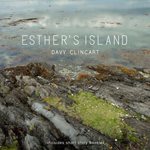
Davy Clincart is a Scottish author, musician and producer. In 2016, he relocated his studio to the Island of Lismore in the Inner Hebrides, where he started working with local artists. The result has been a beautiful CD-set, Sounds From The Great Garden, featuring songs, poetry and storytelling (review forthcoming). A totally different beast is his double package Esther's Island, which is a short story plus an additional soundtrack (available as download and a limited number of physical CDs).
The tale of classical dancer Esther and blues guitarist Charlie deals with aging and dementia. It is touching, gut-wrenching, quintessentially a story about love found and lost. Singer-fiddler Mairi Campbell was moved by both story and music and said: The music holds the emotional terrain – subtle, mysterious. Please have a look @ the spell-binding video from film maker Julia Fayngruen based on Davy's story.
![]()
Davy Clincart, Esther's Island. Clincart Music, 2019
Photo Credits:
(1) Christoph Wagner 'Ear & Eye - Encounters with World Music',
(2) Benedicte Maurseth 'To Be Nothing',
(3) 'An Fhidil Bheo: ceol an Northern Fiddler',
(4) Mairéad Ní Mhaonaigh,
(5)-(6) Knut Hamre,
(7) Hallvard T. Bjørgum,
(8) Hauk Buen,
(9) Turid Spildo
(10) Benedicte Maurseth,
(11) Guro Kvifte Nesheim,
(12) Annbjørg Lien
,
(13) Annlaug Børsheim
,
(14) Valkyrien,
(15)-(16) Janiva Magness,
(17) Davy Clincart 'Esther's Island'
(unknown/website).